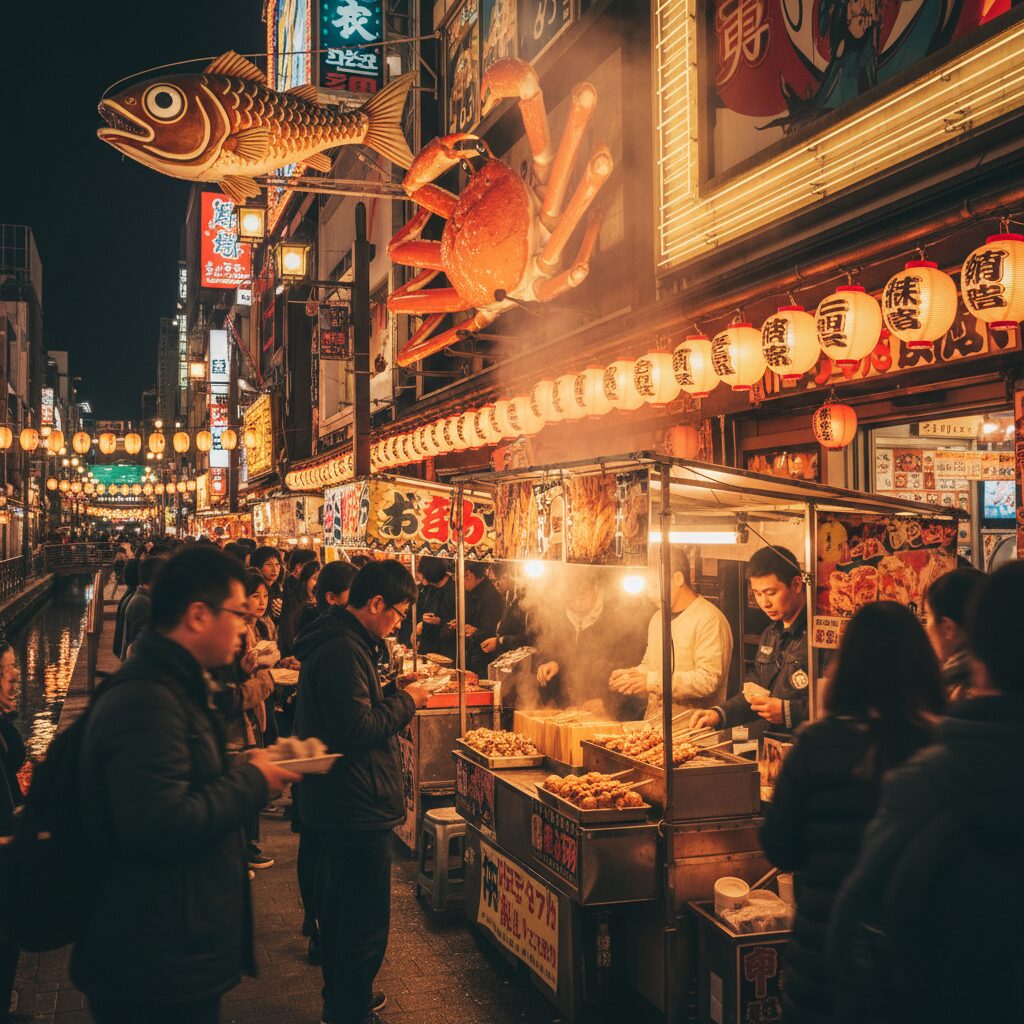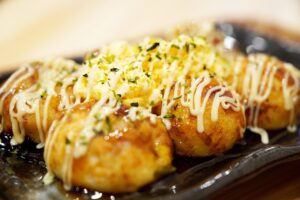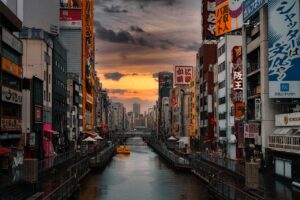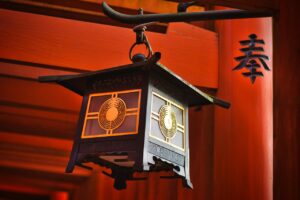Welcome to the vibrant, beating heart of Osaka, a city that lives by a simple, profound motto: kuidaore. The word translates, with a joyful sense of abandon, to ‘eat until you drop,’ and nowhere is this philosophy more brilliantly, chaotically, and deliciously alive than in Dotonbori. This dazzling canal-side entertainment district is more than just a place; it’s a full-body sensory experience. It’s a symphony of sizzling grills, bubbling broths, and the rhythmic chant of vendors, all set against a kaleidoscopic backdrop of flashing neon signs and gigantic, almost surreal, food sculptures. To walk through Dotonbori is to walk through the culinary soul of Japan’s kitchen, where every stall, every restaurant, and every puff of steam tells a story of tradition, innovation, and an unwavering dedication to making people happy through food. This is not just a food tour; it’s an immersion into a culture that celebrates flavor with an unmatched passion. Before we embark on this unforgettable journey, let’s pinpoint our location in this magnificent urban playground. Get ready to loosen your belt and open your mind to the endless feast that awaits.
For a more intimate and equally electrifying culinary experience, be sure to explore the hidden gems of Osaka’s back alleys.
The Philosophy of Kuidaore: More Than Just a Meal
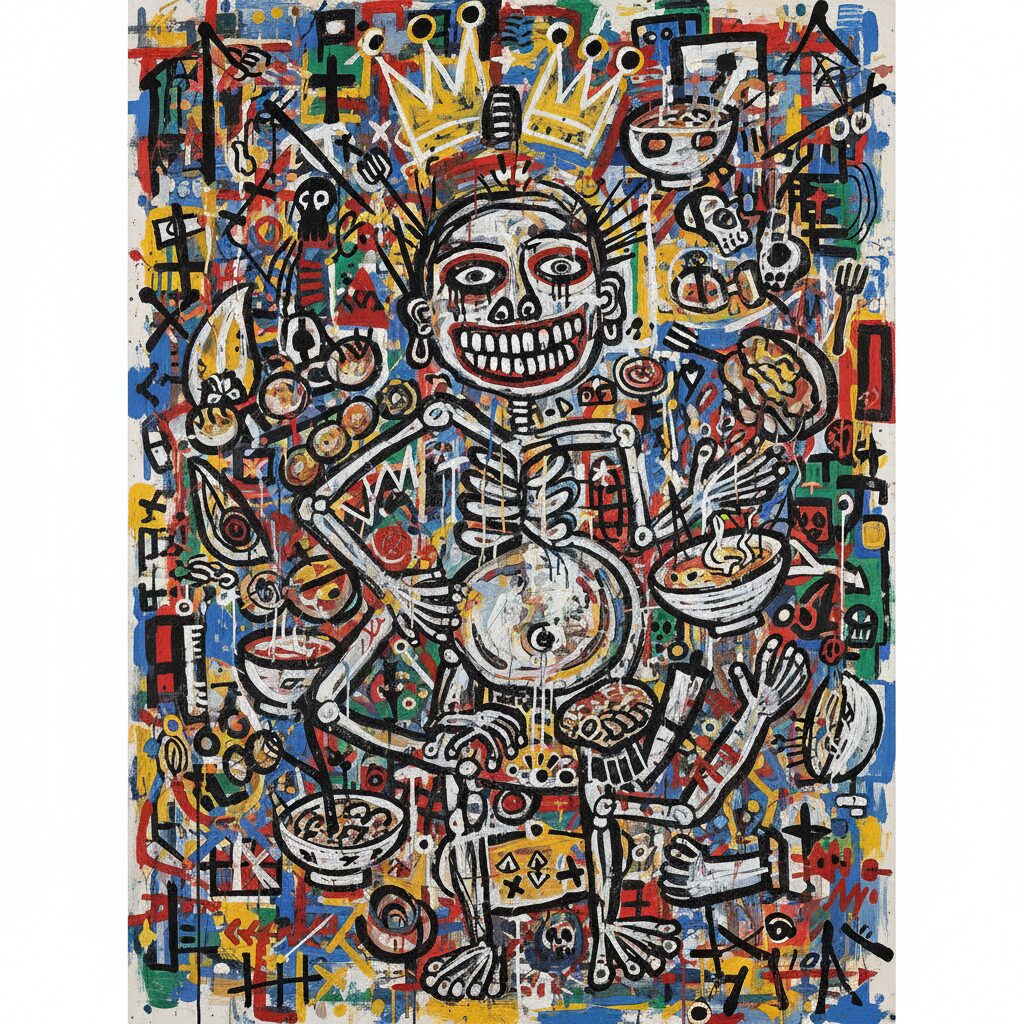
To truly grasp Dotonbori, you must first embrace the spirit of kuidaore. This concept is deeply ingrained in the Osakan identity. It’s not about mere gluttony; rather, it’s a passionate, almost scholarly quest for culinary excellence and enjoyment, often taken to the point of financial excess—though nowadays, this is more of a playful exaggeration. This philosophy originated from Osaka’s history as the ‘nation’s kitchen’ during the Edo period, a central hub where rice and goods from across Japan were gathered and traded. This concentration of wealth and resources cultivated a discerning public with high standards for food. People didn’t just eat to survive; they lived to eat, seeking the finest flavors, the most skillful preparations, and the most fulfilling experiences. Dotonbori stands today as the modern temple to this belief. Here, food is not simply sustenance; it is entertainment, community, and an art form. You see it in the precise way a chef flips a batch of takoyaki, the pride in a vendor’s voice as they describe their secret sauce, and the shared joy on the faces of those gathered around a teppan grill. To engage with the Dotonbori street food scene is to become part of this living history, honoring a tradition that takes food seriously, yet always with a spirit of fun and adventure. It’s about savoring every bite, appreciating the craft, and letting the pursuit of deliciousness guide your journey through the neon-lit streets.
The Icons of the Street: A Culinary Walkthrough
Your adventure into the heart of Osaka’s flavor kingdom begins the moment you step onto the main street. The air itself is a rich blend of savory sauces, grilling meats, sweet batter, and the subtle salty hint of the Dotonbori canal. It’s an irresistible invitation to explore. Let’s delve into the dishes that have turned this district into a global pilgrimage site for food enthusiasts.
Takoyaki: Osaka’s Soul Captured in a Perfect Sphere
If Osaka had a signature flavor, it would undoubtedly be takoyaki. These steaming hot, ball-shaped snacks reign supreme as the kings of Dotonbori street food, crafted through a captivating process. Your first experience will likely be joining a long but swiftly moving line in front of a stall where chefs, with the precision of surgeons and the rhythm of percussionists, manage massive cast-iron pans filled with hemispherical molds. The performance is pure theater. A light, savory batter—often a secret house recipe—is poured generously into the molds. Then, a tender piece of boiled octopus (tako), the star of the dish, is placed in the center of each forming ball. The magic follows. As the batter begins to set, the chefs use long, sharp picks to skillfully and continuously turn the balls, a blur of motion that folds the runny batter inside, gradually shaping a perfect globe. It’s a wrist-and-tool dance, a skill refined through countless repetitions. The sound is a constant, satisfying sizzle. Within minutes, the takoyaki transform from liquid to solid, developing a delicately crisp, golden-brown exterior while preserving a molten, almost creamy core. They are served in boat-shaped paper dishes, usually in sets of six or eight. But the artistry doesn’t stop there. The finishing touch is a cascade of toppings that creates a symphony of taste and texture. A thick, sweet-and-savory brown takoyaki sauce is lavishly brushed on, followed by a lattice of creamy Japanese mayonnaise. A sprinkle of fine green seaweed powder (aonori) adds a subtle oceanic note, and the whole creation is topped with a fluttering handful of paper-thin dried bonito flakes (katsuobushi). As the heat rises from the takoyaki, the delicate flakes dance and curl as if alive—a final piece of visual poetry before your first bite. Be cautious; the inside is famously hot. A small puncture with your toothpick releases a puff of steam. The first bite is a revelation: the crisp shell gives way to a gooey, flavor-packed interior, and the tender chew of octopus offers a perfect contrast. It’s savory, sweet, creamy, and utterly addictive. This is more than a snack; it’s an experience that defines the city.
Okonomiyaki: The Savory Canvas for Your Cravings
Transitioning from the handheld delight of takoyaki, we arrive at its heartier, more substantial cousin: okonomiyaki. The name itself—meaning “grilled as you like it”—reflects its customizable and democratic nature. Often called a savory Japanese pancake or even a Japanese pizza, these comparisons fall short of capturing its true spirit. It’s a dish that feels like a warm embrace, a comforting and deeply satisfying meal that brings people together. At a typical Dotonbori okonomiyaki restaurant, you might find yourself seated at a table with a large, flat iron grill (teppan) embedded in its surface. The experience is interactive and communal. The base is a batter made from flour, grated nagaimo (a type of yam that adds a fluffy texture), dashi (a savory stock), and a generous amount of finely shredded cabbage. To this base, you add your chosen ingredients: thinly sliced pork belly is classic, but options abound, from squid and shrimp to cheese and mochi. The chef might prepare it for you on a central grill before transferring it to your table’s teppan to keep it warm, or in some places, you get to cook it yourself. The batter is poured onto the sizzling grill and expertly shaped into a thick, round pancake. It cooks slowly, allowing the cabbage to soften and sweeten while the exterior develops a beautiful, crispy char. Once fully cooked, it’s coated with the same tangy, sweet okonomiyaki sauce used on takoyaki, creating a rich, caramelized glaze. A crisscross pattern of Japanese mayonnaise adds a creamy counterpoint. Finally, like its spherical relative, it’s finished with a dusting of aonori and a generous handful of fluttering bonito flakes. You cut it with a small metal spatula (kote), serving portions onto your plate. Each bite is a complex medley of textures and flavors: the softness of cooked cabbage, the chewiness of pork or seafood, the crispy edges of the pancake, and the harmonious blend of sweet and savory sauces. It’s soul food, Osaka-style, and sharing a large okonomiyaki with friends, steam rising from the teppan at the center of the table, is a quintessential Dotonbori experience.
Kushikatsu: The Art of the Golden Skewer
Further along, you’ll discover the delicious realm of kushikatsu, another of Osaka’s culinary cornerstones. The concept is simple yet brilliant: various ingredients are skewered, dipped in a light batter, and deep-fried to perfect golden-brown crispness. The charm of kushikatsu lies in its variety and its casual, convivial atmosphere. Originating in the working-class Shinsekai district, its popularity has made it a staple in Dotonbori as well. Entering a kushikatsu restaurant, you’ll find menus listing dozens of options. Everything from meats (beef, pork, chicken) and seafood (shrimp, scallops, squid) to a wide range of vegetables (onions, shiitake mushrooms, lotus root, asparagus). More adventurous choices might include quail eggs, cheese, or even mochi. You order by the skewer, enabling you to sample many items. Each skewer is coated in fine panko breadcrumbs, creating a wonderfully light and crispy shell that doesn’t feel heavy or greasy. They arrive piping hot at your table, standing upright in a metal container. The heart of the kushikatsu experience is the communal pot of thin, dark dipping sauce. Here, the most important rule applies: absolutely no double-dipping! This rule is strictly observed for hygiene, as the sauce pot is shared by everyone. You dip your skewer once, then enjoy your first bite. If you want more sauce, use the raw cabbage leaves provided at your table to scoop some and drizzle it onto your skewer. The cabbage also acts as a refreshing palate cleanser between fried bites. It’s a delightful exploration of taste and texture. The crunch of the panko gives way to the perfectly cooked ingredient inside—the juiciness of an onion ring, the tenderness of beef, the creaminess of camembert cheese. It’s a fun, interactive, and immensely satisfying way to eat, often paired with a cold beer, making it a favorite for after-work gatherings and casual dinners.
Navigating the Neon Labyrinth
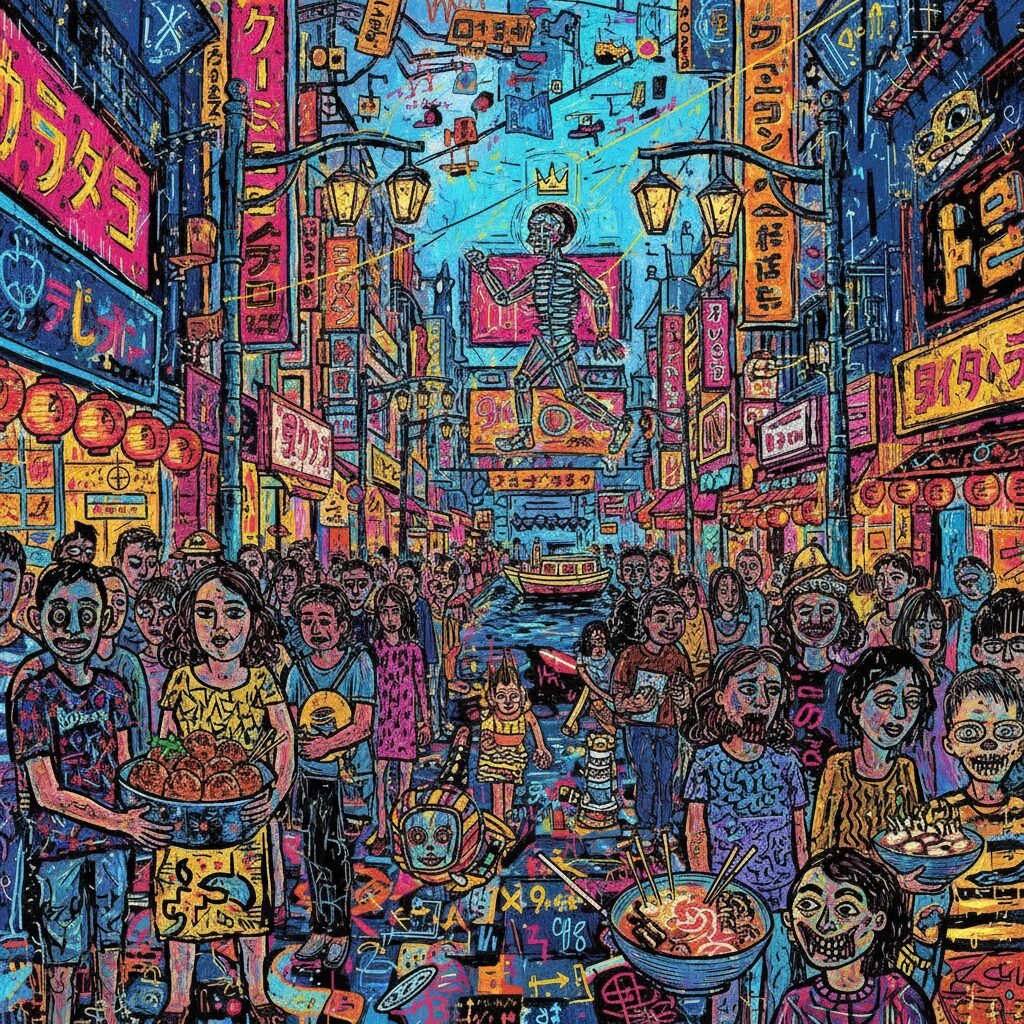
Dotonbori delights both the eyes and the palate. The district serves as a living museum of extravagant signage, a tradition that began in the early 20th century when theaters and restaurants competed for attention. Today, this tradition has evolved into a stunning exhibition of mechanical and neon wonders.
A Symphony of Sights, Sounds, and Smells
The most iconic landmark is undoubtedly the Glico Running Man. This enormous neon sign, first installed in 1935, shows a runner crossing a finish line. It has become a symbol of Osaka itself and a popular photo spot where visitors imitate the runner’s triumphant pose on the Ebisu Bridge. But the Glico Man is only the beginning. Look around, and you’ll see a gigantic mechanical crab with moving claws for the Kani Doraku restaurant, a massive octopus guarding a takoyaki stand, a huge pufferfish lantern, and a dragon curling around the entrance of a ramen shop. These are not just signs; they are landmarks—works of pop art that define the area’s landscape. As dusk falls, Dotonbori truly comes alive. The neon lights flicker on, reflecting off the dark canal waters and splashing the scene with hues of electric blue, vibrant pink, and fiery orange. The sounds grow louder: J-pop spilling from storefronts, the sizzling of countless grills, vendors shouting to attract customers, and the lively chatter of thousands sharing in the spectacle. The aromas surround you, a continuous, overlapping cloud of delicious scents pulling you from one stall to another. You might catch the sweet scent of caramelized sugar from a crepe stand, quickly followed by the savory, smoky aroma of grilled squid, and then the rich, complex fragrance of simmering ramen broth. It’s an overwhelming, thrilling, and utterly unique urban experience.
Timing Your Culinary Quest
Dotonbori shifts its character throughout the day. Visiting in the afternoon offers a more leisurely pace. The crowds are smaller, allowing for easier exploration of the shops and arcades along the adjacent Shinsaibashi-suji shopping street. It’s a good time to grab a snack and watch preparations for the evening rush. However, the quintessential Dotonbori experience takes place after sunset. Night is when the district dons its full splendor. Neon lights shine their brightest, crowds swell to their peak, and the energy buzzes with excitement. This is the ideal time for an extensive food crawl, hopping from spot to spot while soaking in the electrifying atmosphere. Be ready for lines at the most popular venues, but that’s part of the experience. Waiting gives you a chance to watch the experts in action and heightens your anticipation. Weekday evenings are slightly less crowded than weekends. Open year-round, Dotonbori becomes especially magical in winter when festive illuminations enhance the already dazzling display.
Beyond the Main Drag: Finding Hidden Charms
While the main Dotonbori street is the hub of activity, some of the area’s most treasured spots are found just a few steps away, in the tranquil alleyways branching off from the neon-lit hustle.
Hozenji Yokocho: A Step Back in Time
A short stroll from the lively main strip leads to Hozenji Yokocho, a narrow, stone-paved alley that feels like a gateway to a past era. The ambiance here contrasts sharply with the futuristic glow of Dotonbori. Lanterns emit a soft, warm glow on the traditional wooden fronts of cozy restaurants and izakayas. The alley is renowned for Hozenji Temple, a small shrine housing a statue of Fudo Myoo, a Buddhist deity. Known affectionately as Mizukake Fudo, the statue is completely enveloped in a thick, green moss carpet. This is due to worshippers pouring water over it as part of their prayers, a practice that has fostered the lush growth over time. Pausing to observe this peaceful ritual offers a calming, reflective counterpoint to Dotonbori’s lively energy. The eateries in Hozenji Yokocho are celebrated for their quality, providing a more refined dining experience, many specializing in traditional Japanese cuisine (kappo). It’s an ideal spot to escape the crowds and savor a quieter, more atmospheric meal.
A First-Timer’s Guide to Feasting
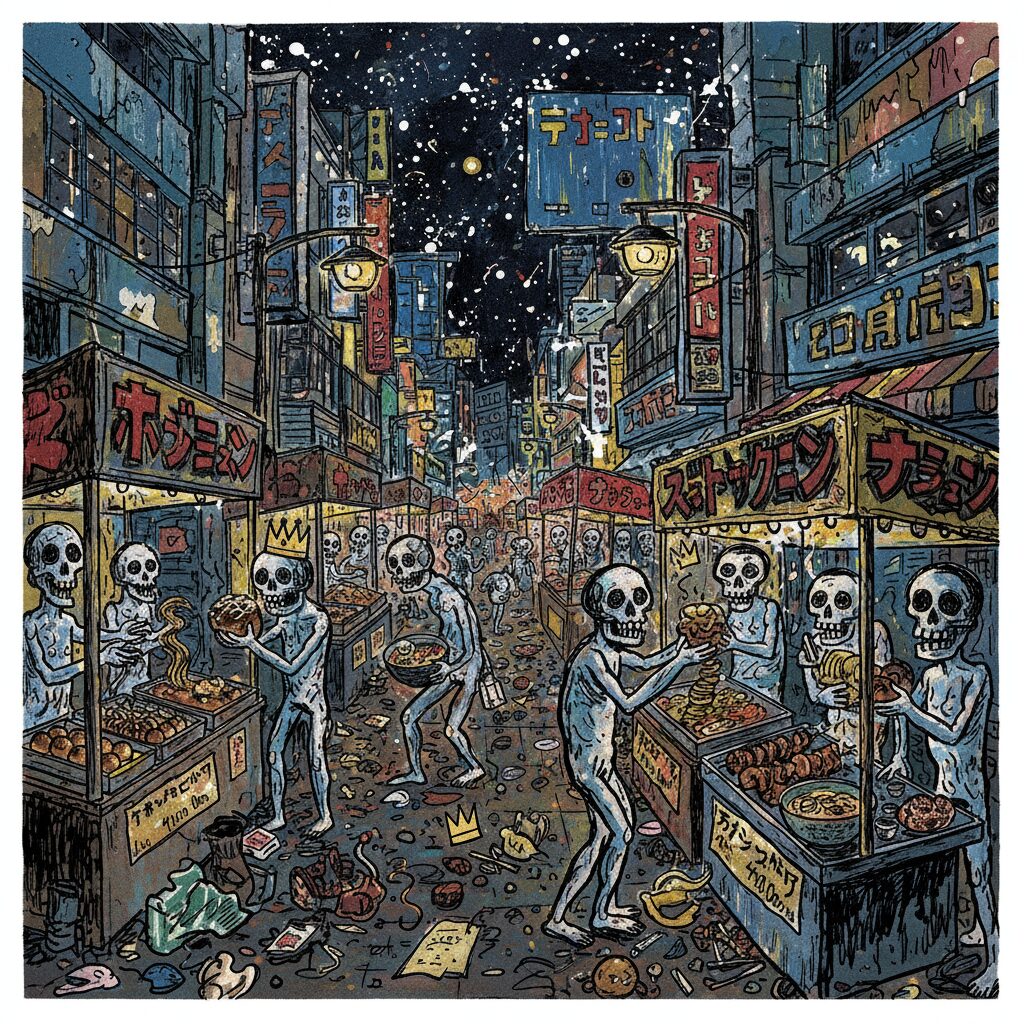
Exploring Dotonbori for the first time can feel overwhelming. Here are some helpful tips to enhance your culinary adventure.
- Cash is King: Although larger restaurants and chain stores often accept credit cards, many small street food vendors and ramen shops with ticket machines only take cash. It’s best to carry a reasonable amount of yen.
- Pace Yourself: The wide variety of food is tempting, but rushing in is a common mistake for beginners. The spirit of kuidaore is more of a marathon than a sprint. Share dishes with your companions to sample more without filling up too fast. Begin with smaller snacks like takoyaki or a single kushikatsu skewer before committing to a full bowl of ramen or a whole okonomiyaki.
- Observe and Learn: Many eateries, especially ramen shops, use vending machines (kenbaiki) to place orders. You insert money, press the button for your chosen dish, and hand the ticket to the staff. It may seem daunting at first, but simply watch how the person ahead of you handles it. Most machines have pictures, making the process quite simple.
- Embrace the Queue: A long line often signals a top-quality spot. Don’t be put off by the wait. Japanese queues are orderly and generally move quickly. This is part of the authentic Dotonbori experience.
- To Walk or Not to Walk: While eating on the go is generally frowned upon in Japan, Dotonbori is one of the few places where it’s more accepted due to its street food culture. However, it’s polite to find a designated area or stand to the side, away from the flow of foot traffic, to enjoy your snack. This helps avoid spills and is considerate to others nearby.
Your Dotonbori Story Awaits
Dotonbori is more than just a collection of restaurants and food stalls; it is a vibrant, living celebration of life’s simple joys. It is a place where food goes beyond mere nourishment to become a source of happiness, community, and cultural expression. The glow of the Glico Man, the sizzle of okonomiyaki on the grill, the first explosive bite of perfectly crafted takoyaki—these are the moments that make lasting memories. Visiting Dotonbori means accepting an invitation to indulge, explore, and lose yourself in its delightful chaos. So arrive with an empty stomach and an open heart. Let the enticing aromas lead you, be adventurous in your choices, and fully embrace the wonderful spirit of kuidaore. Your unforgettable Osaka food journey awaits, one delicious bite at a time.
